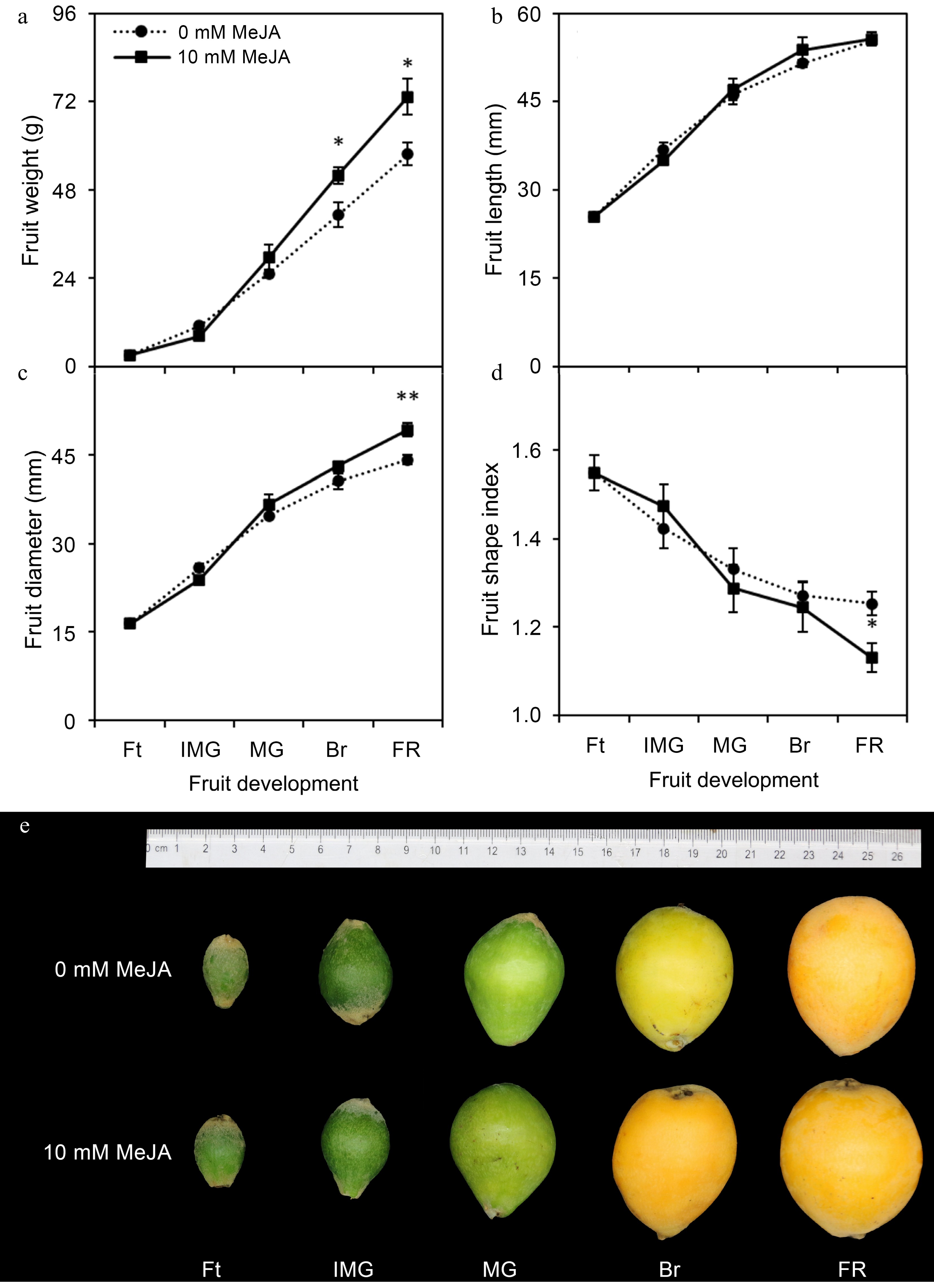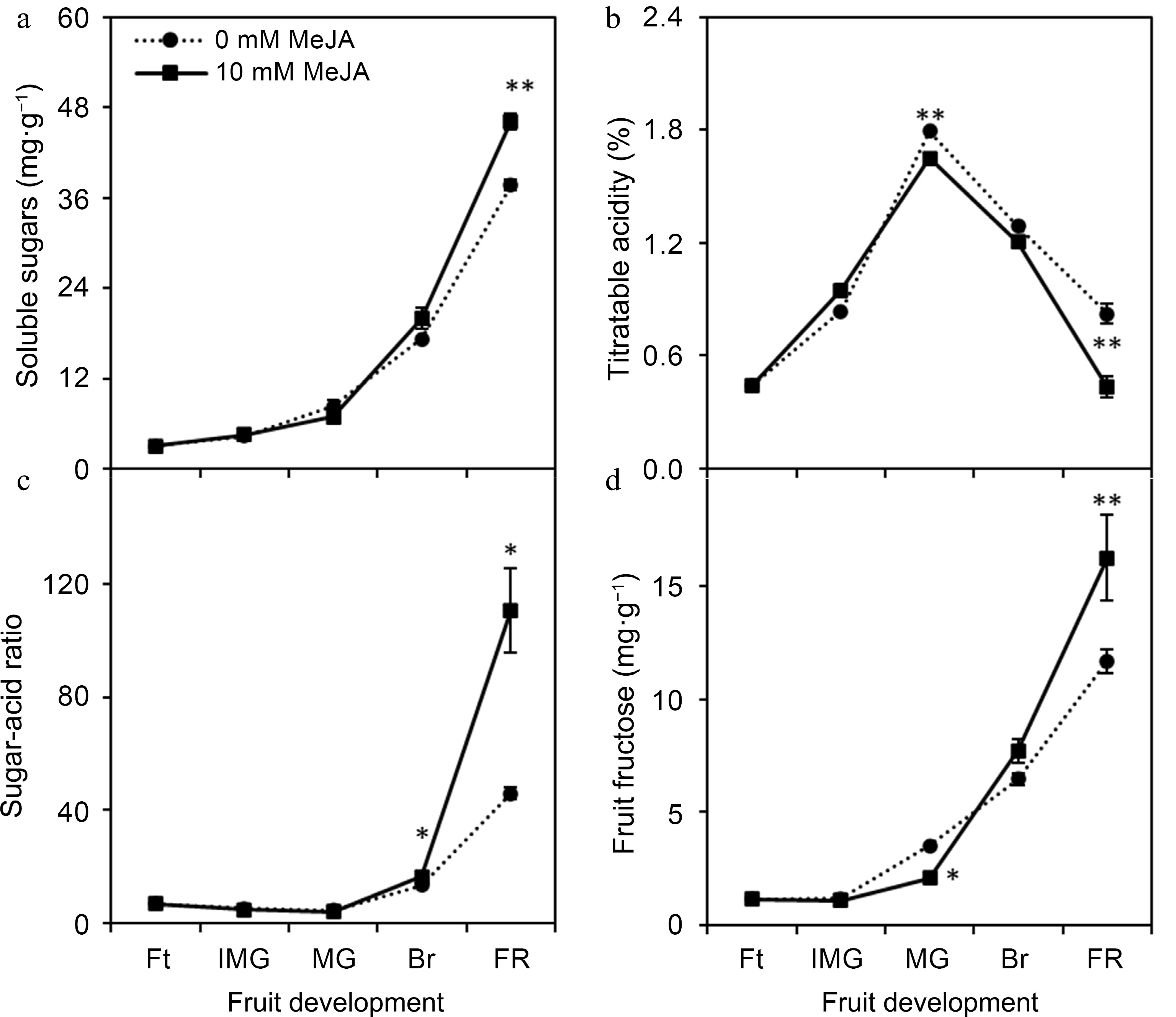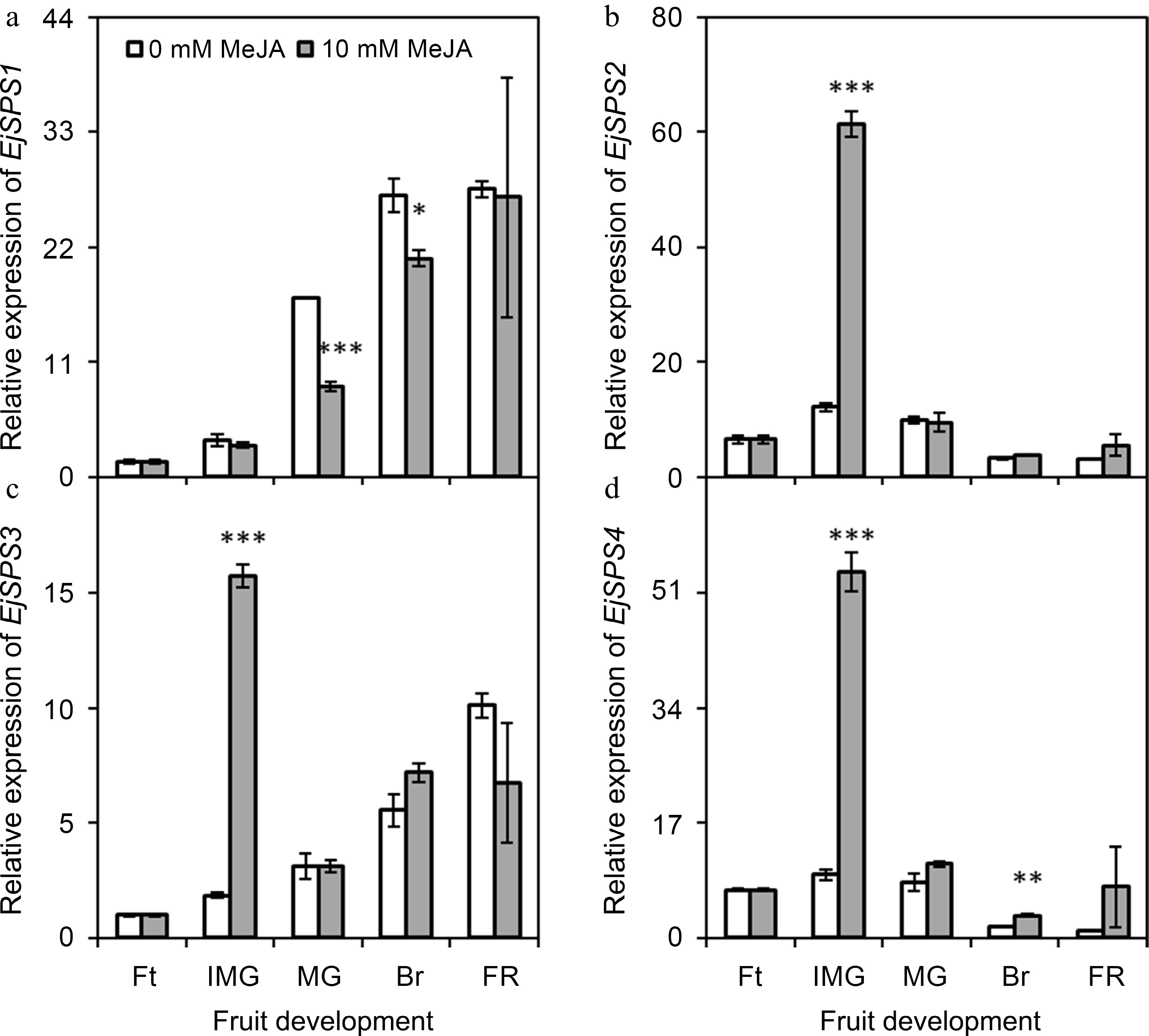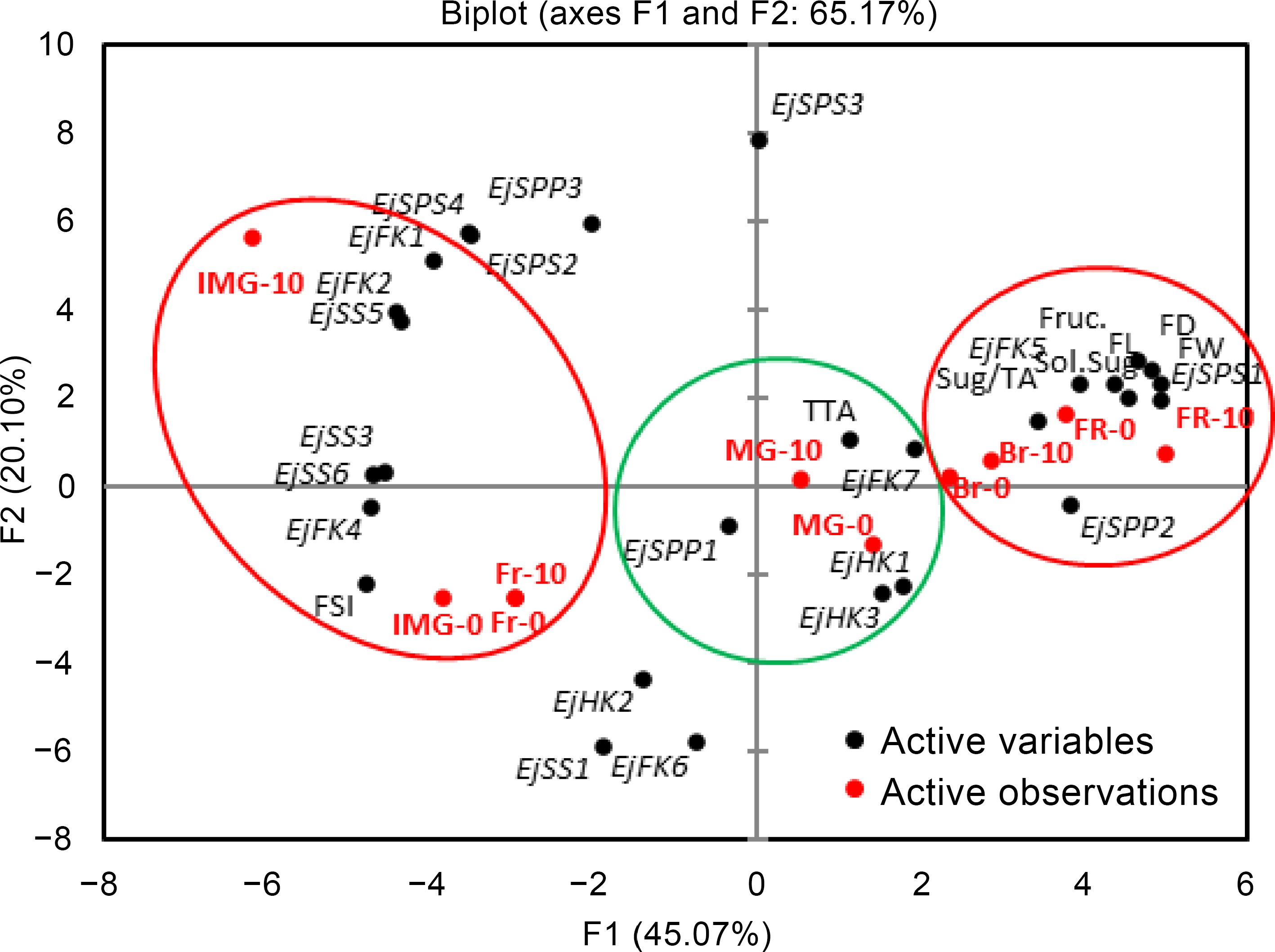-

Figure 1.
Influence of foliar applied methyl jasmonate on fruit weight and size of loquat at different developmental stages. Treatment means were compared using Student's t-test, where *, **, and *** denote significance level (α) of 0.05, 0.01, and 0.001, respectively. Ft – fruitlet, IMG – immature green, MG – mature green, Br – breaking, FR – full ripe.
-

Figure 2.
Effect of foliar applied methyl jasmonate on (a) fruit soluble sugars, (b) titratable acidity, (c) sugar-acid ratio and (d) fruit fructose content of loquat at different developmental stages. Sugar determination involved the use of fresh weight in the assessment process. Treatment means were compared using Student's t-test, where *, **, and *** denote significance level (α) of 0.05, 0.01, and 0.001, respectively. Ft – fruitlet, IMG – immature green, MG – mature green, Br – breaking, FR – full ripe.
-

Figure 3.
Effect of foliar applied methyl jasmonate on expression patterns of EjFK genes in loquat fruits at different developmental stages. Treatment means were compared using Student's t-test, where *, **, and *** denote significance level (α) of 0.05, 0.01, and 0.001, respectively. Ft – fruitlet, IMG – immature green, MG – mature green, Br – breaking, FR – full ripe.
-

Figure 4.
Effect of foliar applied methyl jasmonate on expression patterns of EjHK genes in loquat fruits at different developmental stages. Treatment means were compared using Student's t-test, where *, **, and *** denote significance level (α) of 0.05, 0.01, and 0.001, respectively. Ft – fruitlet, IMG – immature green, MG – mature green, Br – breaking, FR – full ripe.
-

Figure 5.
Effect of foliar applied methyl jasmonate on expression patterns of EjSPP genes in loquat fruits at different developmental stages. Treatment means were compared using Student's t-test, where *, **, and *** denote significance level (α) of 0.05, 0.01, and 0.001, respectively. Ft – fruitlet, IMG – immature green, MG – mature green, Br – breaking, FR – full ripe.
-

Figure 6.
Effect of foliar applied methyl jasmonate on expression patterns of EjSPS genes in loquat fruits at different developmental stages. Treatment means were compared using Student's t-test, where *, **, and *** denote significance level (α) of 0.05, 0.01, and 0.001, respectively. Ft – fruitlet, IMG – immature green, MG – mature green, Br – breaking, FR – full ripe.
-

Figure 7.
Effect of foliar applied methyl jasmonate on expression patterns of EjSS genes in loquat fruits at different developmental stages. Treatment means were compared using Student's t-test, where *, **, and *** denote significance level (α) of 0.05, 0.01, and 0.001, respectively. Ft – fruitlet, IMG – immature green, MG – mature green, Br – breaking, FR – full ripe.
-

Figure 8.
Principal component analysis among MeJA treatments (treatment variables) and studied parameters (observation variables). Clustering of variables has been done for PCA F1 (red) and F3 (green) according to their highest squared cosines. Fr – fruitlet, IMG – immature green, MG – mature green, Br – breaking, FR – full ripe, FW – fruit weight, FL – fruit length, FD – fruit diameter, FSI – fruit shape index, Sol.Sug – soluble sugars, TTA – total titratable acidity, Sug/TA – sugar-acid ratio, Fruc. – fruit fructose.
Figures
(8)
Tables
(0)